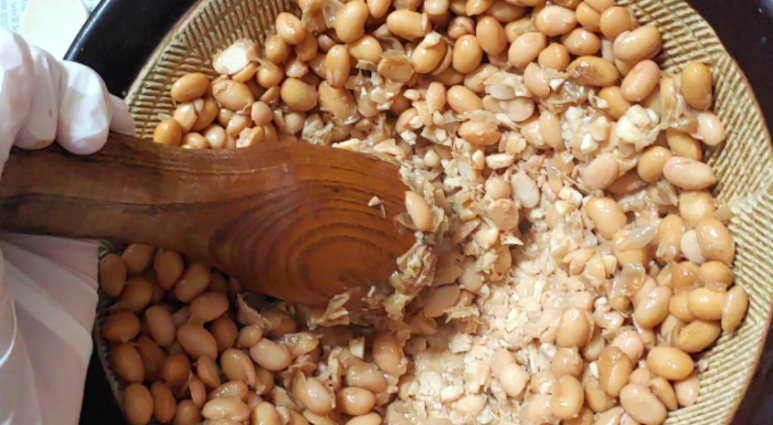Diluting Salty Doenjang: A Flavor Enhancement Recipe
How to Dilute Overly Salty Doenjang with Added Flavor #DoenjangDilution #DoenjangRecipe

Is your well-aged doenjang (Korean soybean paste) a bit too salty for your liking? Don’t worry! This recipe shows you how to gently dilute its saltiness by adding nutritious fermented soybeans (meju kong), enhancing its flavor while reducing the salt content. If your freshly made doenjang isn’t quite ripe yet, this method will help you achieve a perfect, balanced taste. Follow these detailed steps and tips for a delicious doenjang.
Ingredients- Salty Doenjang 470g (3 years aged)
- Soaked Meju Kong 460g (approx. 200g before soaking)
Cooking Instructions
Step 1
First, prepare the meju kong which will help adjust the doenjang’s saltiness. You’ll need 460g of meju kong. (This is about 200g before soaking.) Soak the beans in plenty of water, enough to cover them completely, for at least 8 hours.

Step 2
After soaking, rinse the meju kong and place them in a pot. Add enough water to generously cover the beans and bring to a boil over high heat. Be mindful that beans can easily boil over, so lift the lid briefly once boiling to release steam. Keep a close eye on the pot and stir frequently while boiling.

Step 3
Once the beans start boiling, reduce the heat to medium-low and let them simmer gently until tender. Boiling too vigorously can cause the beans to burn, so be careful.

Step 4
Meju kong tends to stick to the bottom of the pot, so stir frequently, scraping the bottom, while it simmers to prevent burning. Gentle, consistent cooking is key.

Step 5
Considering the quantity of beans, we will simmer them for approximately 2 hours and 30 minutes. Ensure the beans are cooked until they are very soft.

Step 6
If the water level gets low during cooking, add more warm water as needed to keep the beans submerged and prevent them from burning. Continue simmering while monitoring the water and ensuring the beans are cooked through.
Step 7
This step is the same as step 5. Continue to simmer the beans, adjusting the water level until they are fully cooked. Do not discard the cooking liquid; it will be used to dilute the doenjang.

Step 8
Once the beans are tender, turn off the heat and let them cool slightly. The cloudy liquid (bean broth) should not be discarded; it will be incorporated into the doenjang dilution process. This broth adds a wonderful savory depth.

Step 9
To check if the beans are well-cooked, simply take one bean and try to mash it between your fingers. If it easily breaks apart and mashes smoothly, they are perfectly cooked. Soft beans will blend better with the doenjang.

Step 10
Once the beans have cooled down enough to handle, mash them using a mortar and pestle. They don’t need to be completely smooth; slight lumps are perfectly fine and can add a pleasant texture to the finished doenjang. Mash them to your preferred consistency.

Step 11
Now, add the mashed cooked meju kong to the 470g of salty doenjang. Use your hands or a spatula to thoroughly mix and combine the doenjang and beans, ensuring an even distribution without clumps.

Step 12
After mixing, taste the doenjang and adjust the seasoning. If it’s still too salty, add more mashed beans. If it tastes too bland, enrich it with some authentic Korean soy sauce (ganjang) or sea salt to achieve the desired flavor balance.

Step 13
This diluted doenjang, a blend of approximately 470g of salty doenjang and 460g of meju kong, now has a reduced saltiness and an enhanced savory flavor. Enjoy this perfectly balanced doenjang made with the ‘Doenjang Dilution’ method from ‘Doenjang Dilution’. **After making the diluted doenjang, store it at room temperature, away from direct sunlight, for about 10 days before refrigerating for long-term storage.**



